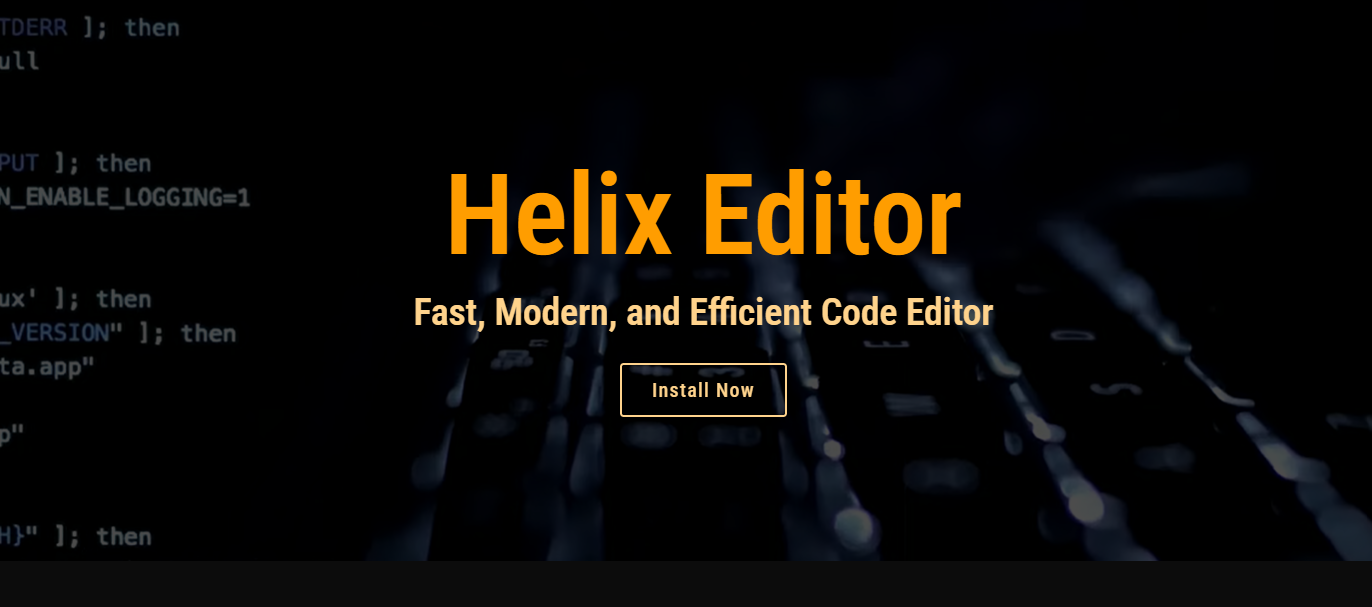Is Helix the Best Rust-Based Text Editor?

Rust is known for speed, safety, and modern design, and Helix Editor mirrors those traits in how it approaches code editing. Developers are increasingly moving toward Rust-based tools, and Helix is making a strong case for becoming the go-to text editor for serious coding.
Built entirely in Rust, Helix offers modal editing, real-time syntax parsing, and advanced navigation. Unlike other editors that depend heavily on extensions, Helix delivers a complete experience right out of the box. It’s minimal in look but powerful under the hood.
Rust-Based Editor Landscape
Rise of Rust in Developer Tools
Rust’s safety and performance have made it the language of choice for modern developer tools. Editors like Helix, Lapce, and Zed are part of a new wave. They combine low-level control with a sleek experience. These tools aim to replace slow, plugin-heavy environments. The Rust ecosystem fosters lean, purpose-built apps that run fast.
Other Editors Built in Rust
Lapce and Zed are two notable Rust-based editors. Lapce is focused on GUI-based performance, while Zed aims at collaboration. However, both rely more on extensions or visual gimmicks. Helix is different; it puts efficiency and precision first. Instead of following trends, Helix simplifies core tasks with minimal design and powerful logic.
Modal vs GUI-Centric Design
Most Rust editors today follow traditional GUI patterns. Helix Editor breaks from that by embracing modal editing. Inspired by Vim, it divides tasks into navigation, selection, and insertion. This allows faster workflows and fewer context switches. It feels focused and purpose-built for code rather than being a general-purpose editor.
Helix’s Core Strengths
Built for Speed and Stability
Helix is written in Rust, which means it inherits the language’s performance and reliability. File opens are near-instant, commands respond immediately, and large files don’t lag. Crashes are rare thanks to Rust’s memory safety. It’s stable enough to use daily, even for complex projects.
Native Modal Editing Workflow
Helix’s modal editing model separates different states like normal, insert, and visual. This reduces keystroke fatigue and improves command consistency. Unlike Vim, Helix simplifies mode transitions. The result is a more fluid editing experience that new users can grasp without years of memorization. It’s modern and intuitive by design.
Tree-sitter Syntax Highlighting
Helix uses Tree-sitter to provide real-time syntax parsing. This creates smart, language-aware editing without relying on themes or outdated regex patterns. The editor understands code structure and uses it for selections, movements, and highlighting. It brings intelligence to the core experience without needing add-ons.
Multi-Cursor and Selection Model
Efficient Parallel Editing
Helix supports native multiple cursors, allowing users to edit many parts of code at once. You can add cursors through search or syntax-aware selection. This makes tasks like renaming variables or updating repeated lines much faster. Unlike other editors, this is baked into the Helix core.
Selection Before Action
Helix uses a “selection first” model, where you select text before applying actions. This mirrors how developers think. You pick the block, word, or node, then run the command. This reduces errors and increases confidence. It’s more visual and intentional than command-first systems.
Visual Modes with Precision
Helix includes visual modes for selecting characters, lines, blocks, and syntax nodes. You can easily highlight function bodies, parameters, or even code paths using keyboard commands. These modes are responsive and make structural edits a breeze. Editing becomes smarter and more accurate.
Performance Advantages
Optimized for Low Resource Use
Despite its feature set, Helix is extremely lightweight. It runs directly in the terminal and uses minimal RAM or CPU. Even large codebases load quickly. There’s no bloated UI engine or Electron framework slowing it down. This performance edge matters for long sessions or weak hardware.
Rust-Powered Efficiency
Rust provides memory safety without garbage collection. This lets Helix perform complex tasks instantly and safely. The editor feels fast not only because of its interface, but also because of its systems-level performance. You get the power of native apps without the crashes or leaks of older tools.
No Dependency on Plugins
Helix is powerful right out of the box. You don’t need 20 extensions to get basic features. Features like LSP support, syntax parsing, and file navigation are already built in. This eliminates friction and reduces bugs. It’s a full experience without setup time.
Key Features That Set Helix Apart
- Modal editing with clear and consistent command logic
- Multiple cursors with native support
- Tree-sitter integration for intelligent parsing
- Fast terminal-based performance
- Selection-first model for intentional editing
Comparisons to Other Editors
Helix vs Lapce
Lapce uses a GUI-first design with a traditional look. It supports LSP and is built for speed. However, it lacks modal editing and native multi-cursor features. Helix feels faster in the terminal and offers better keyboard-centric workflows. Developers who avoid the mouse will prefer Helix.
Helix vs Zed
Zed is focused on collaboration and real-time editing in a GUI. It’s modern but not as lean as Helix. Zed offers beautiful visuals, but editing features feel basic compared to Helix’s deep command model. For teamwork, Zed shines. For solo power-editing, Helix wins.
Helix vs Vim/Neovim
While Vim and Neovim have decades of support and countless plugins, they also come with high learning curves and messy configs. Helix modernizes the modal experience, includes syntax trees, and removes plugin clutter. It’s Vim-like, but fresh, clean, and easier to master.
Use Helix Editor
Ideal for Terminal-Centric Developers
If you prefer the terminal and want to avoid GUI distractions, Helix is perfect. It integrates well with CLI tools like Git, tmux, and grep. You stay in one environment with minimal context switching. Terminal speed plus modern editing logic is a rare combo.
Great for Rust and Modern Language Users
Helix works beautifully with Rust, Python, TypeScript, Go, and other languages. Syntax support is deep, and Tree-sitter gives real-time accuracy. Whether you’re building backend systems or frontend apps, Helix handles code gracefully and intelligently.
Suitable for Power Users and Beginners
While Helix is a serious tool, it doesn’t require decades of practice. Its defaults are friendly, and its logic is consistent. Beginners can get started quickly, and power users can go deep. You don’t need to spend months customizing it before it becomes usable.
Conclusion
Helix stands out as the best Rust-based text editor due to its modal logic, native performance, and powerful built-in features. It’s a rare blend of modern design, fast execution, and developer-first philosophy. For those who value structure, speed, and simplicity, Helix delivers a complete experience without compromises




